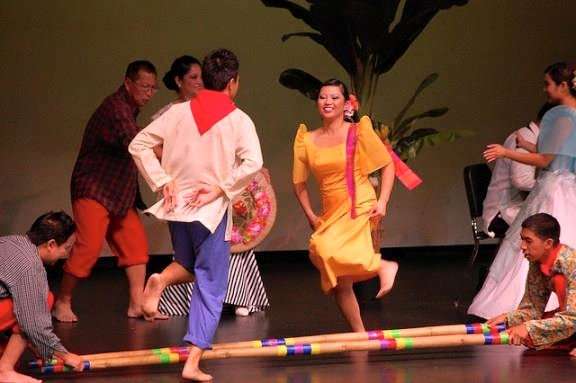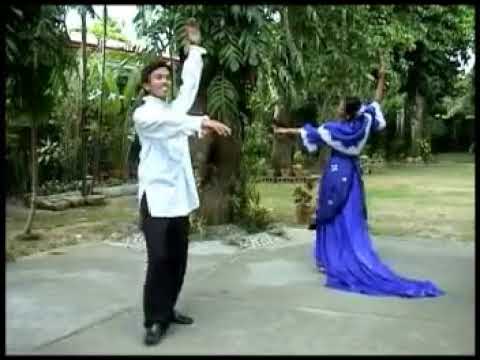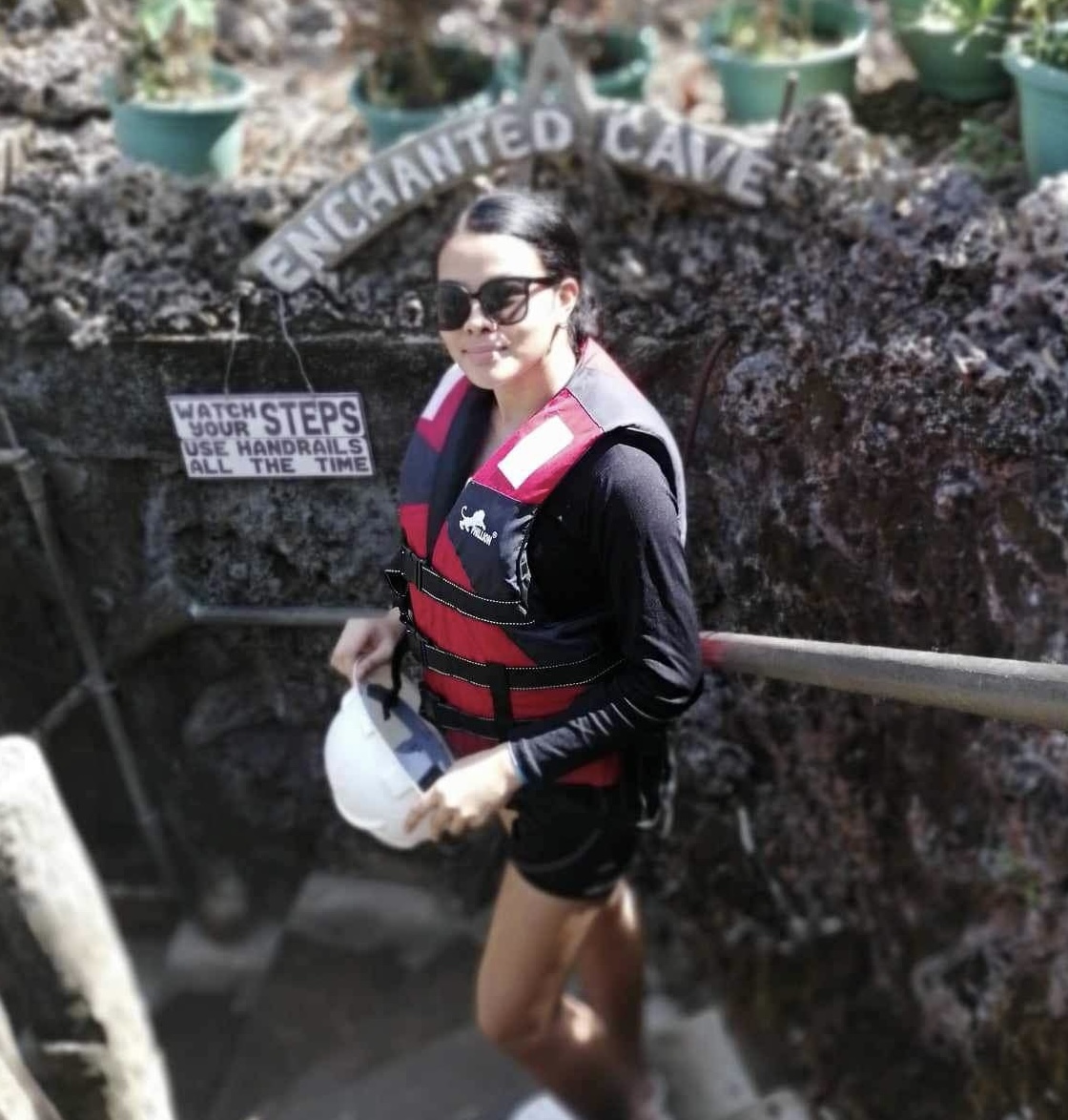The Philippines, a diverse archipelago consisting of over 7,000 islands, is a country rich in cultural heritage and traditions. One aspect that showcases the vibrant tapestry of Filipino culture is its traditional Philippine folk dances. These dances serve as a window into the history, beliefs, and values of the Filipino people. In this article, we will embark on a journey to discover the captivating world of different folk dances in the Philippines.
1. Tinikling – Philippine Folk Dance
Originating from the province of Leyte, Tinikling is often hailed as the national dance of the Philippines. It is a dynamic and energetic Philippine folk dance characterized by the rhythmic clashing of bamboo poles. Dancers skillfully maneuver between the poles, representing the movements of the tikling bird. Tinikling embodies the agility, coordination, and teamwork valued in Filipino culture.

2. Pandanggo sa Ilaw – Philippine Folk Dance
Pandanggo sa Ilaw is a graceful philippine folk dance that originated in the province of Lubang, Mindoro. Performers balance oil lamps on their hands and heads while gracefully executing intricate footwork. This dance reflects the Spanish influence on Filipino culture, as it bears similarities to the Spanish fandango. Pandanggo sa Ilaw exudes elegance and showcases the Filipino people’s resiliency and adaptability.

3. Singkil – Philippine Folk Dance
Hailing from the Maranao people of Mindanao, the Singkil dance tells the tale of the legendary Princess Gandingan as she gracefully navigates through a forest filled with swaying bamboo poles. This Philippine folk dance mimics the princess’s escape from danger and embodies the grace, poise, and strong spirit of a Filipino woman. Singkil is often accompanied by the mesmerizing sounds of kulintang, a traditional Muslim musical ensemble.

4. Cariñosa – Philippine Folk Dance
Cariñosa is a Philippine folk dance known for its flirtatious and playful movements. Originating from the Panay region, this folk dance is often performed during social gatherings and festivals. Dancers elegantly sway their handkerchiefs while engaging in courtship movements. Cariñosa exemplifies the charm, warmth, and hospitality of the Filipino people, and it serves as a celebration of love and courtship.

5. Maglalatik – Philippine Folk Dance
Maglalatik is a dance originating from the province of Rizal and is often performed during the town’s fiestas. This lively Philippine folk dance depicts a mock battle between two groups: the Moros (Muslims) and the Christians. Dancers, adorned with coconut shell halves attached to their bodies, engage in rhythmic movements while skillfully striking the shells together. Maglalatik symbolizes the historical struggle between the Filipino people and foreign colonizers.

6. Binasuan – Philippine Folk Dance
Hailing from Pangasinan, Binasuan is a captivating Philippine folk dance that showcases the skill and dexterity of its performers. Dancers gracefully balance glasses filled with rice wine on their heads and hands while executing intricate footwork. The fluid movements and coordination required in Binasuan reflect the Filipinos’ ability to maintain balance and adapt to challenges with grace.

7. Itik-Itik – Philippine Folk Dance
Legend has it that the Itik-Itik dance was inspired by a young woman named Kanang, who possessed extraordinary beauty and charm. During a town fiesta, Kanang was asked to dance but was initially hesitant due to her shyness. However, as the music played, she began to mimic the graceful movements of a duck. Her improvised dance captivated the audience, and from then on, her dance style became known as the Itik-Itik dance.
The Itik-Itik Philippine folk dance incorporates movements that imitate the actions of a duck, emphasizing grace, agility, and fluidity. Dancers make use of delicate arm gestures and elegant footwork while incorporating quick, sweeping steps reminiscent of a duck’s wading and flapping. These movements symbolize the Filipino people’s connection with nature, as ducks are often seen gracefully gliding through rice fields and bodies of water.

8. Pandanggo Oasiwas – Philippine Folk Dance
Pandanggo Oasiwas finds its roots in the coastal towns of Ilocos, where the dance originated among the fishing communities. The word “oasiwas” translates to “sway” or “swing” in the Ilocano language, perfectly capturing the essence of this dance. It is believed that Pandanggo Oasiwas was inspired by the gentle movements of ocean waves and the grace of birds in flight, reflecting the close connection between the Filipino people and their natural surroundings.

9. Kuratsa – Philippine Folk Dance
The origins of Kuratsa can be traced back to Spanish colonial times, influenced by the European waltz and fandango dances. This Philippine folk dance embodies the courtship and mating rituals of the crab, symbolizing the Filipino people’s romantic nature and their connection to nature’s rhythms. Kuratsa is typically performed by a pair of dancers, a man, and a woman. The dance begins with an introductory promenade, followed by lively and synchronized footwork. The dancers gracefully sway, glide, and turn, mirroring each other’s movements. Kuratsa incorporates intricate arm gestures, hand clapping, and playful interactions between the dancers.

10. La Jota Moncadeña – Philippine Folk Dance
La Jota Moncadeña takes its name from the town of Moncada in Tarlac province, where the dance is believed to have originated. La Jota Moncadeña is characterized by lively and energetic movements. Dancers perform intricate footwork, intricate turns, and graceful arm movements, often holding bamboo castanets called “palillos.” The dance is typically performed in pairs or groups, with participants forming a circle or line formation. The choreography emphasizes synchronization, grace, and lively interactions between dancers, captivating the audience with its spirited performance.

11. Kappa Malong-Malong – Philippine Folk Dance
Kappa Malong-Malong finds its roots in the indigenous communities of Mindanao, where the malong holds deep cultural significance. The malong is a tubular garment worn by various indigenous groups, such as the Maranao, Maguindanao, T’boli, and Yakan. It is a symbol of identity, tradition, and pride. Kappa Malong-Malong is a group dance that features dynamic movements and vibrant costumes. Dancers, both male and female, wrap the malong around their bodies, creating a flowing and colorful ensemble. This Philippine folk dance incorporates graceful arm gestures, intricate footwork, and coordinated movements that reflect the fluidity of the malong.

12. Habanera Botolena – Philippine Folk Dance
Habanera Botolena is characterized by its graceful and flowing movements, exuding elegance and sophistication. Dancers perform intricate footwork, gentle turns, and sweeping arm gestures that evoke a sense of grace and poise. The dance showcases the performers’ agility and precision, as well as their ability to express emotions through movement.

13. Pantomina – Philippine Folk Dance
Pantomina finds its roots in Spanish-influenced Philippine culture, particularly in the Bicol region. This folk dance reflects the Bicolano people’s spirit, resilience, and strong connection to their traditions. It is often performed during festivals, weddings, and other special occasions, serving as a celebration of love, unity, and the beauty of the Bicolano folklore. Pantomina is performed by couples, usually in a large circle or in pairs facing each other. The dance begins with a slow, swaying motion, symbolizing the gentle courtship between a man and a woman. As the dance progresses, the tempo quickens and the movements become more lively and energetic.

14. Surtido – Philippine Folk Dance
The choreography of Surtido is a tapestry of different dance styles. It seamlessly transitions from one regional dance to another, showcasing the distinct movements, gestures, and footwork associated with each region. The dancers demonstrate their versatility and skill as they navigate the varied choreography, executing precise steps, turns, jumps, and formations. Surtido displays the dynamism and artistry of Filipino folk dance.

15. Polkabal – Philippine Folk Dance
Polkabal is characterized by lively and energetic movements that reflect the influence of the polka. Dancers move in pairs, forming a circle or a line formation, and execute quick and lively steps, turns, and spins. The dance incorporates graceful arm movements, rhythmic footwork, and joyful interactions between partners. The movements are synchronized and coordinated, creating a vibrant and captivating performance.

16. Magkasuyo – Philippine Folk Dance
Magkasuyo is deeply rooted in Filipino courtship traditions and is an embodiment of the romantic culture found in the Visayan region. Magkasuyo is performed by a couple, showcasing their connection and partnership. The dance begins with the couple facing each other, exchanging gentle gestures and movements that represent their courtship. The choreography features synchronized steps, graceful turns, and flowing movements that symbolize the couple’s journey through life together.

Conclusion
The folk dances of the Philippines offer a glimpse into the diverse and vibrant culture of the Filipino people. Each dance carries its unique history, symbolism, and regional influences, representing the unity amidst diversity within the archipelago. Through these dances, the Philippines proudly showcases its rich heritage and celebrates the values, traditions, and resilience of its people for generations to come.

I’m Ken, an avid travel blogger and a nurse chronicling my adventures on “The Sneaky Traveller.” My journey in healthcare and travel enthusiast is driven by a desire to make a meaningful impact in both realms.
